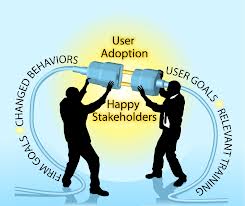Businesses across a wide variety of industries are successfully leveraging data analysis to obtain substantial bottom-line benefits.
Take InterContinental Hotels Group, for example. The hospitality company has consolidated its data analysis efforts related to the rewards program of its 71 million members into an integrated system that combines customer information with unstructured big data sources like social media comments.
 Using this data analysis, the hotel has launched a marketing campaign that has generated a 35% higher rate of customer conversion than a similar campaign last summer, according to the Wall Street Journal.
Using this data analysis, the hotel has launched a marketing campaign that has generated a 35% higher rate of customer conversion than a similar campaign last summer, according to the Wall Street Journal.
While previous campaigns might have had an average of seven to 15 customized marketing messages, the new campaign has had more than 1,550.
Additional data analysis success stories highlighted by the WSJ include:
- Caesars Entertainment has saved $4.5 million in the cost of employees visiting emergency rooms when less expensive urgent care facilities are also available options. This information comes from human resources data analysis.
- UPS has reduced fuel consumption in 2011 by 8.4 million gallons and cut 85 million miles off its routes in 2011 by combining GPS information and data from fuel-efficiency sensors that are installed on more than 46,000 vehicles.
- Ford Motor Co. has used data analysis to gain product development insight from more than 10,000 comments on websites and forums to decide to add its “three blink” turn indicator in the US on its new Ford Fiesta cars in 2010. “The use of text-mining algorithms was critical in this endeavor and helped secure a complete picture that would not have been available using traditional market research,” says Michael Cavaretta, Ford’s technical leader for predictive analytics and data mining.
But while business intelligence and analytics continue to be top priorities for CIOs hoping to gain the types of actionable insight and economic returns that companies like Caesars and Ford have garnered, many struggle with end-user adoption.
Recent research from Gartner Inc. finds that only about 30% of potential users in an organization adopt CIO-sponsored analytics tools.
However, this trend does appear to be changing as organizations maneuver to make analytics more invisible to worker processes, the research notes.
“A large enterprise makes millions of decisions every day,” says Rita Sallam, research vice president analyst at Gartner. “The challenge is that companies have far more data than people have time, and the amount of data that is generated every minute keeps increasing. In the face of accelerating business processes and a myriad of distractions, real-time operational intelligence systems are moving from ‘nice to have’ to ‘must have for survival.’ The more pervasively analytics can be deployed to business users, customers and consumers, the greater the impact will be in real time on business activities, competitiveness, innovation and productivity.”
Gartner recommends three steps companies can take to best leverage analytics:
1. Analytics must be more invisible and transparent to users. Companies should consider easy natural language interfaces for exploring data through embedded analytics, the firm advises.
“Moving toward something that looks simple and invisible from the user’s perspective will require a great deal of computing power, extended capabilities and skills, and potential complexity in information management systems,” the report notes. “Business intelligence and analytics professionals should begin by identifying targeted data exploration and high-value decision-making opportunities where making analytics invisible, transparent, context-aware and accessible in real time to specific constituencies can add demonstrable value.”
2. Organizations should offload as much work as possible from people. Event capture, filtering, mathematical and pattern detection should be offloaded to real-time operational intelligence software to provide better insight to users.
3. Companies should adopt prescriptive analytics to make better decisions and reduce costs. Companies should invest in software to help bolster decision making that can make recommendations to a human decision maker.
“Solutions architects should work with business analysts, subject matter experts and business managers to develop an understanding of the kinds of business decisions that will be made and let computers make decisions that are structured and repeatable to conserve people’s time and attention for the thinking and actions that computers cannot do,” the report advises.
Next Steps:
- Do read the press release to learn how Tibco Spotfire 5.5 dramatically increases the value of existing corporate data assets.
- Register for the Spotfire 5.5 webcast with Leslie Miller on Wednesday, April 10th at 1 p.m. EDT.
- Subscribe to our blog to stay up to date on the latest insights and trends in data analysis.





